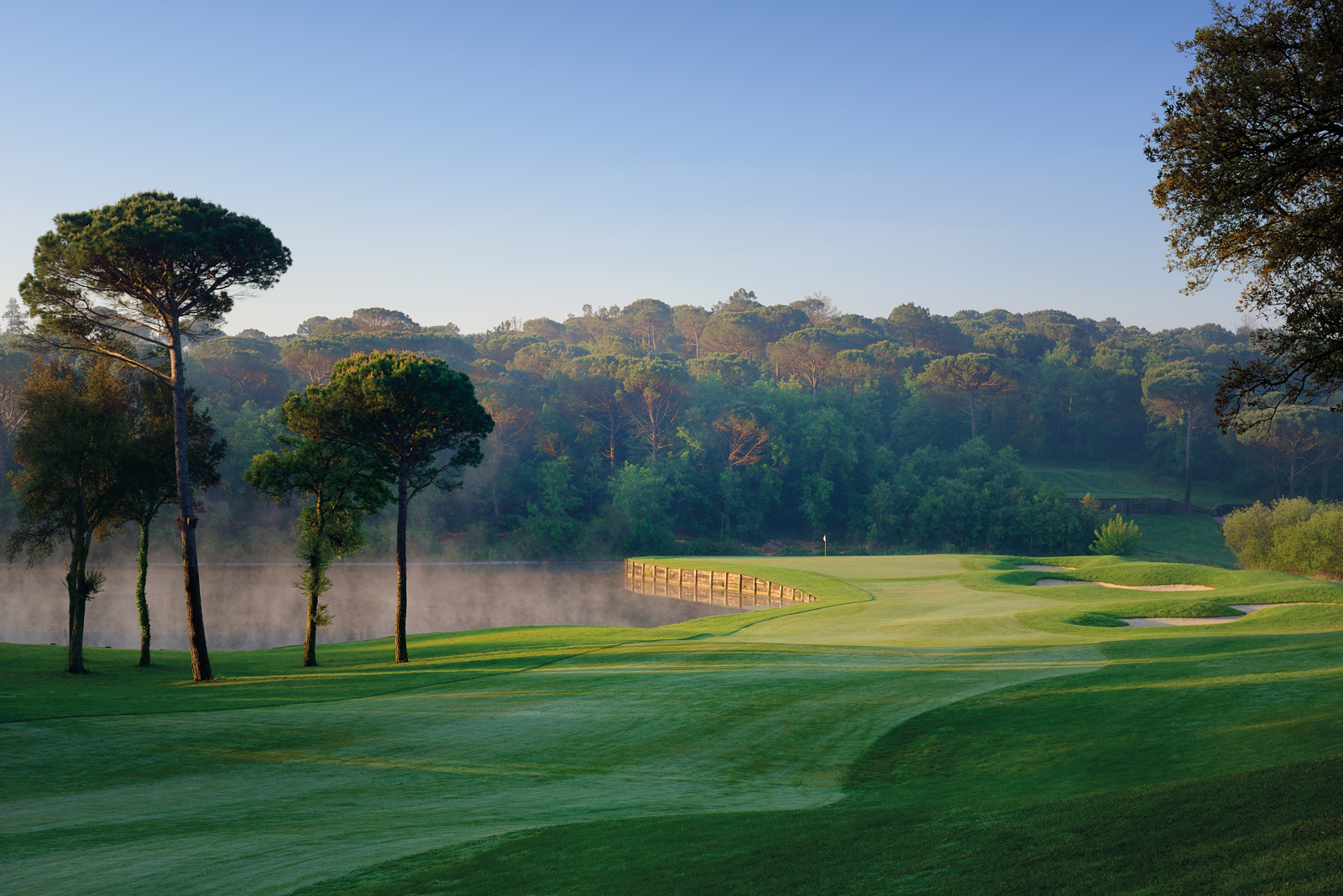
One sublime shot, or one lamentable screw-up: That’s all it can take to decide a major championship. Golf history is replete with such tales, yet traditionalists often are reluctant to claim a single incident can make so much difference. Paul Trow, disagreeable as ever, salutes the gossamer-thin gap between success and failure at the game’s highest level
Gene sarazen was a diminutive giant with vaulting claims to fame. Not only did he invent the sand wedge, dress like Beau Brummel and vacuum-up victories for fun, but when he became the first golfer to win the “grand slam” of major championships, it was with a showman’s flourish that even contemporaries like Babe Ruth, Enrico Caruso and Ernest Hemingway would have deemed preposterous.
Not to put too fine a point on it, the majors came of age on April 7, 1935 during the back nine of the fourth round of the second Augusta National Invitation Tournament when Sarazen pulled the trigger on the “shot heard round the world.”
Born Eugenio Saracini in Harrison, NY, to Sicilian immigrants in 1902, Sarazen had already come far to establish himself as one of the game’s top players; but golf, in essence, was still regarded as a minority pursuit, little more than padding on the sports pages.
All that changed, though, when Sarazen, three shots behind Craig Wood at the time, swept a spoon (4-wood in modern parlance) from a downhill fairway lie towards the 15th green. His ball landed softly over the water, bounced a couple of times and rolled into the cup for an albatross-2.
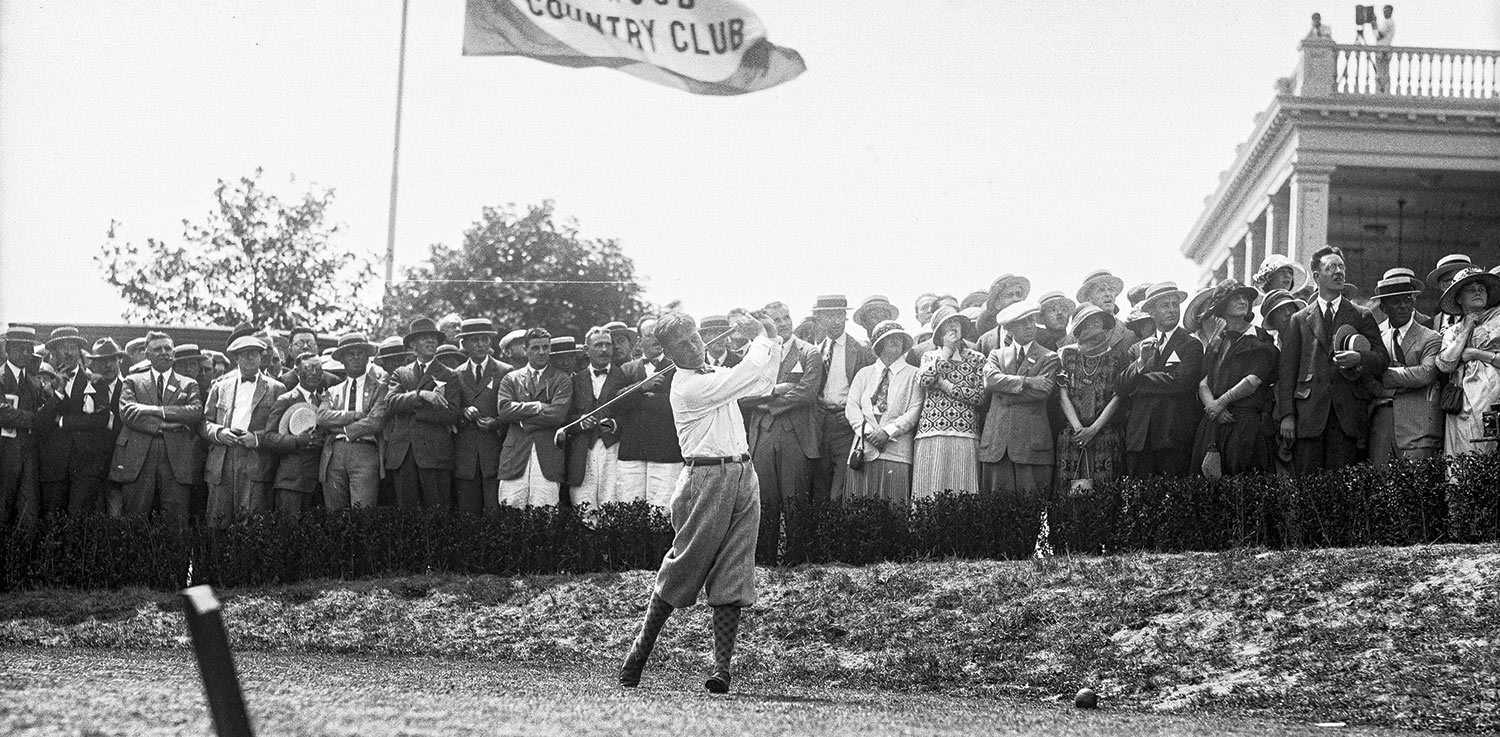
Witnessed by playing partner Walter Hagen, tournament host Bobby Jones, who had strolled down from the clubhouse, and a young Byron Nelson, catching up with an errant drive from the 17th tee, this ethereal, 235-yard coup de grâce was appropriately framed, like a Renaissance masterpiece, by attendant angels of the highest rank.
Sarazen, resplendent in his trademark plus-fours, still had to par in to tie Wood and needed a further 36 holes to eclipse his compatriot in a playoff, but the outcome was inevitable… divine intervention, written in the stars. It should be no surprise they decided to change the tournament’s name a few years later to The Masters!
For the previous 75 years, starting in 1860 with the first [British] Open Championship (it wasn’t known by that name back then), the majors were seen as showcases for quality, templates of competitive fortitude. The United States Open and PGA Championship, dating respectively from 1895 and 1916, compounded that view and by the time the Masters joined the party these tournaments were seen more as tests of consistency than flair.
Flashes of brilliance alone were rarely enough to tip the scales in favor of a rank outsider, though the 1913 U.S. Open playoff triumph by 20-year-old amateur Francis Ouimet over Harry Vardon and Ted Ray at The Country Club in Brookline, MA, proved a notable exception. The home-town youngster would point to the curling, downhill 15-footer he made on the 71st green of regulation play as the turning point in his favor. It also marked the coming of age of American golf.
Nearly half a century earlier, “Young” Tom Morris startled aficionados with the first two truly memorable shots of the [British] Open at Prestwick on the west coast of Scotland—a 166-yard hole-in-one at the par-3 8th in 1869 and a holed spoon from 200 yards for an eagle-3 at the 1st the following year. Needless to say he won on both occasions, but he may well have done so anyway.
The cruel obverse of such fortune—the blunder—was epitomized by England’s Roger Wethered in the 1921 Open at St Andrews when, walking backwards after studying his approach to the 14th green in the third round, he accidentally trod on his ball. It cost him a penalty stroke and, ultimately, defeat by Jock Hutchinson in a playoff.
Such an error was, perhaps, an amateur’s prerogative, but the greatest unpaid golfer of them all, Jones, displayed clinical shot-making skills at the business end of the first and fifth of his 13 major wins. In the 1923 U.S. Open at Inwood Country Club, NY, the playoff with Bobby Cruickshank was level on the 18th when Jones hit his second shot from a bare lie fully 195 yards over a pond to 6 feet to seal a two-stroke victory. Three years later, Jones was level with Al Watrous in the final round of the [British] Open playing the dogleg par-4 17th at Royal Lytham & St Annes (Lancashire, England). With Watrous safely on in two, Jones faced a long, blind second shot from a scrubby, sandy lie over dunes, thick rough and several bunkers. He struck his mashie (5-iron) perfectly and his ball finished closer than Watrous, who was so shocked he promptly three-putted.
Notwithstanding these historical moments, however, Sarazen’s thunderbolt at Augusta changed everything, and from that point onwards players and commentators were increasingly attuned to pivotal moments, potential and real, while acting out and narrating the game’s dramatic twists.
Soon after Sarazen’s miracle, Nelson struck the flagstick six times in 72 holes during the 1939 U.S. Open at Philadelphia Country Club, PA. He ended up in a playoff and established a winning position he never relinquished by holing a 1-iron at the 453-yard 4th for an eagle-2. No wonder when the USGA developed a machine to test equipment they called it “Iron Byron.”
Once the dust had settled on World War II, the majors resumed with renewed vigor and soon there were tide-turning instances aplenty, not only of a heroic nature but also rooted in downright misfortune.
The [British] Open, home to quirky bounces, capricious breezes, pot bunkers and firm greens, produced its fair share of such moments, especially once the leading American players, used to softer, greener conditions, decided to take the championship more seriously.
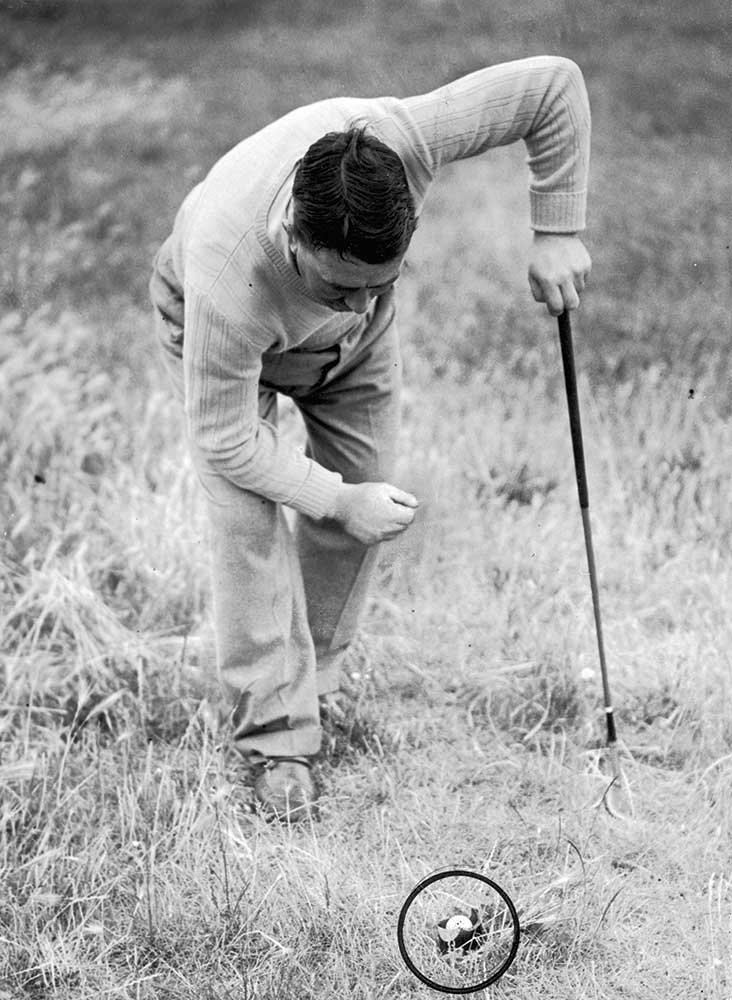
Exhibit 1 on this particular charge sheet came during the second round of the 1949 Open at Royal St. George’s (Sandwich, Kent) when the Irish golfer Harry Bradshaw found his ball just off the 5th fairway in a broken beer bottle. Without a rules official to consult, Bradshaw felt his only option was to play the ball as it lay. Splinters of glass flew everywhere but his ball traveled a mere 25 yards en route to a double-bogey 6. After 72 holes, Bradshaw was tied for the lead with South Africa’s Booby Locke, who trounced him in the subsequent playoff. What might have been had Bradshaw taken relief from the bottle, as the rules actually allowed him to do?
An ironic twist to this tale came in 1957 when Locke holed out to claim his fourth Open at St Andrews, but from the wrong spot, having moved his marker to accommodate his playing partner and not replaced it. The R&A let him off then, claiming he’d have won anyway despite the penalty, but, vindictive though it might have seemed, they could have disqualified him for signing for an incorrect scorecard.
Four years later, Arnold Palmer produced a shot for the ages with a 6-iron from a blackberry bush just off the 15th fairway in the Open at Royal Birkdale (Lancashire, England). He found the green and two-putted for a par that gave him enough cushion to hold off the charging Dai Rees down the stretch.
In 1972 at Muirfield on the east coast of Scotland, defending champion Lee Trevino rolled in a chip from rough behind the 17th green for an unlikely par-5 that sufficiently spooked Tony Jacklin into 3-putting from 15 feet. It was Trevino’s fifth hole-out from off the green that week and duly clinched the narrowest of victories.
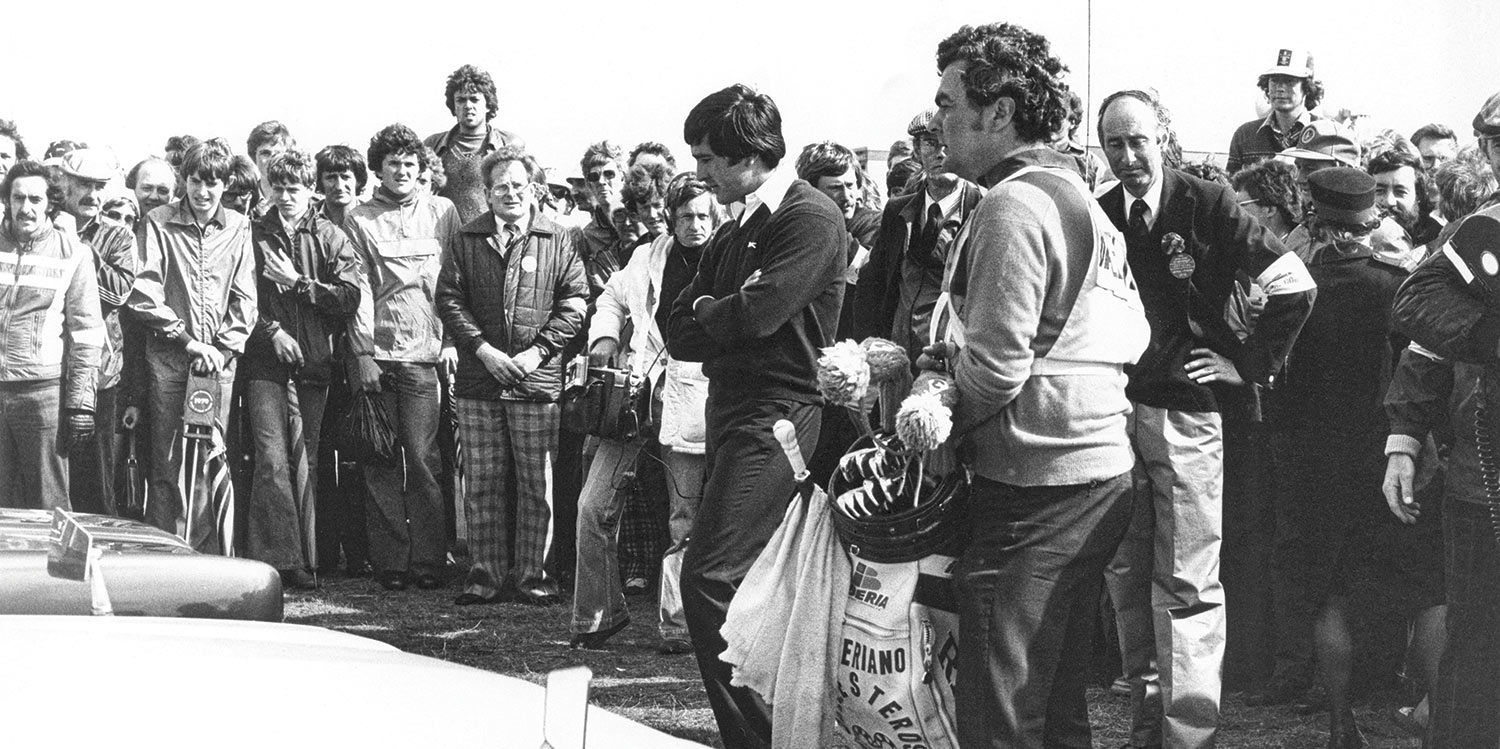
Talking of spooking a playing partner in what had become a match-play situation, who can forget the exploits of Seve Ballesteros to the right of the 16th fairway during the last round at Lytham in 1979?
Hale Irwin, a straight-hitting automaton who had won the U.S. Open at Inverness in Toledo, OH, a month earlier, was left shaking his head as the 22-year-old Spaniard carved his drive into a temporary parking lot that was, bizarrely, not out of bounds, obtained relief from under a fender and secured a tap-in par. Irwin joked about Seve being a “car park champion,” but he wasn’t the one smiling at the day’s end.
Irwin had more egg on his face in 1983 when he tied second, one shot behind Tom Watson at Birkdale. The difference on this occasion was the 6-inch par putt he whiffed on the par-3 14th in the third round. To this day, Irwin can’t really explain what happened.
In contrast, it was high-fives all round when Irwin holed out from 50 feet on the 72nd green in the 1990 U.S. Open at Medinah (Chicago, IL) to clinch a playoff with journeyman Mike Donald that he went on to win.
The Masters serves up pivotal incidents on an almost annual basis. Ironically, one of the saddest—Roberto de Vicenzo signing for one shot more than he took in 1968 and thus missing out on a playoff against Bob Goalby—took place off the course. Then there was the Larry Mize 1987 playoff chip-in on the 11th, the mysterious clinging of Fred Couples’ ball to the downslope just over the water at the infamous short 12th in 1992, and Phil Mickelson’s audacious 207-yard 6-iron onto the green of the par-5 13th from the copse to the right of the fairway in 2010.
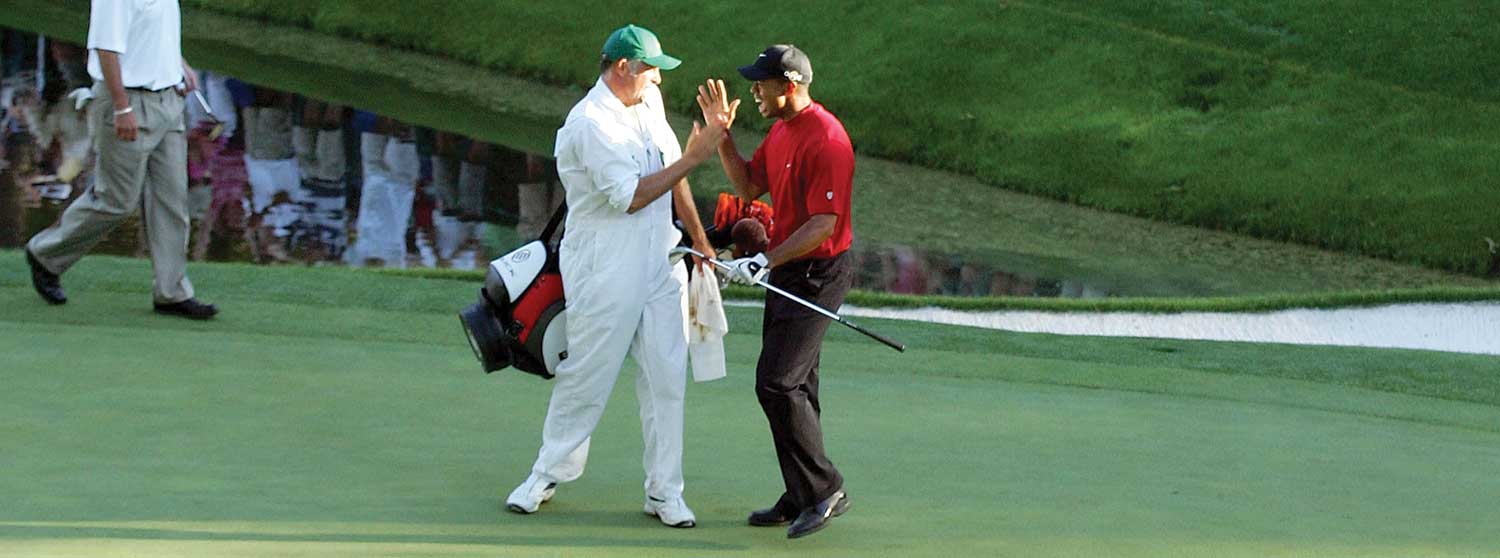
The daddy of them all at Augusta National, though, has to be Tiger Woods’ astonishing, parabolic chip-in on the 16th in 2005. Not only did it help him into a playoff he eventually won and elevate the Nike ball to hitherto uncharted prominence, but it also served up perhaps the most memorable line of live TV golf commentary ever, Verne Lundqvist’s “In your LIFE, have you ever seen anything like that?”
Woods, of course, was also adept at holing clutch putts, especially on the 72nd green of a major to seal a playoff berth. In the 2000 PGA Championship at Valhalla (Louisville, KY) he coaxed in a 6-footer and eight years later in the U.S. Open at Torrey Pines, while hobbling on a broken leg, his 12-foot putt took a dramatic right-to-left turn into the cup.
To date Woods has triumphed in three major playoffs and a probing quiz question would be to name the three vanquished men. The answer, in chronological order—Bob May, Chris DiMarco and Rocco Mediate—would not trip readily off most tongues. The fact that this was the closest any of them came to winning a major is testament to how difficult it was to beat Woods in his pomp even when not firing on all cylinders. Nicklaus, his only real challenger for that GOAT (greatest of all time) moniker, tended to wear his opponents down with doggedness and sustained excellence while Woods could explode into brilliance almost at will. Both men, indeed, had one thing in common: an ability to intimidate their opponents in the heat of battle.
On that parting note, it is perhaps poignant to reflect on an iconic moment, involving Woods tangentially, that seemed pivotal at the time yet merely lit a slow burn that took nearly two decades to fizzle to fruition.
It came in the final round of the 1999 PGA Championship on the par-4 16th at Medinah when Woods, seemingly cruising to his second major title, watched Sergio Garcia in the group ahead unfurl a precocious 6-iron slice of matadorial bravery, eyes closed, onto the green from the roots of a tree. Woods held his nerve to resist the audacious Spanish teenager by a single stroke, but the headlines and photographs the next day were all about Garcia, who had sprinted exuberantly, many felt portentously, up the fairway after his ball. “A Star is Born” was the theme, but it took until the 2017 Masters for Garcia to scale Mount Olympus and arrive finally at golf’s top table. There were many ups and downs along the way, a mixed bag of genius and tomfoolery, yet if he does nothing else in the game Garcia will be remembered for that day in the sun.
It was pure gold that proved not all pivotal moments need result in silverware. Gene Sarazen, the eternal showman, surely would concur.
Follow Us On


| Cookie | Duration | Description |
|---|---|---|
| cookielawinfo-checkbox-analytics | 11 months | This cookie is set by GDPR Cookie Consent plugin. The cookie is used to store the user consent for the cookies in the category "Analytics". |
| cookielawinfo-checkbox-functional | 11 months | The cookie is set by GDPR cookie consent to record the user consent for the cookies in the category "Functional". |
| cookielawinfo-checkbox-necessary | 11 months | This cookie is set by GDPR Cookie Consent plugin. The cookies is used to store the user consent for the cookies in the category "Necessary". |
| cookielawinfo-checkbox-others | 11 months | This cookie is set by GDPR Cookie Consent plugin. The cookie is used to store the user consent for the cookies in the category "Other. |
| cookielawinfo-checkbox-performance | 11 months | This cookie is set by GDPR Cookie Consent plugin. The cookie is used to store the user consent for the cookies in the category "Performance". |
| viewed_cookie_policy | 11 months | The cookie is set by the GDPR Cookie Consent plugin and is used to store whether or not user has consented to the use of cookies. It does not store any personal data. |